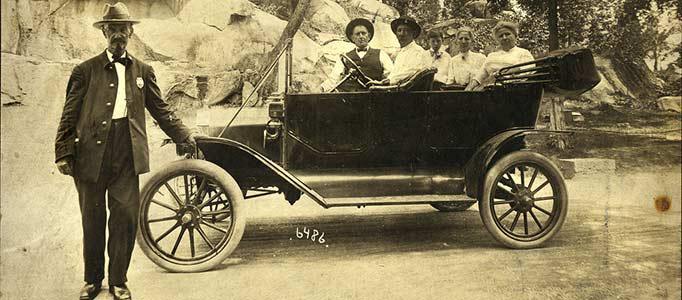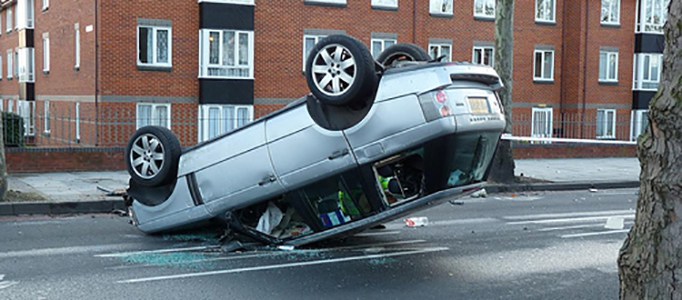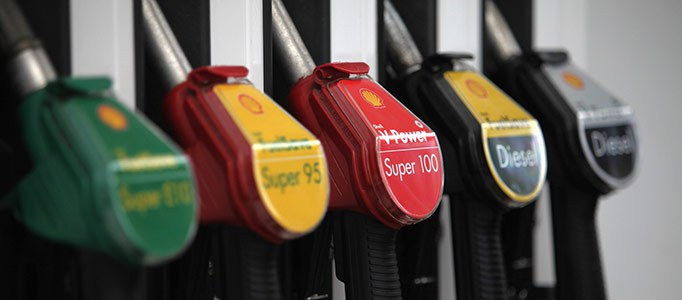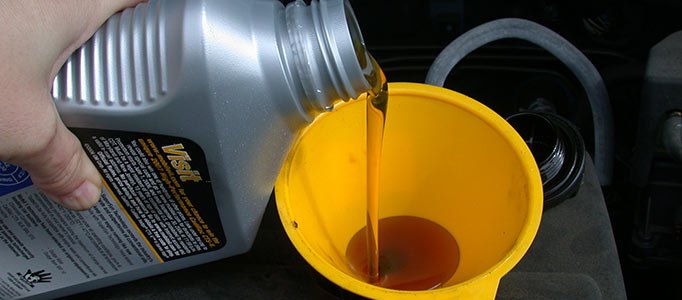There are countless automotive myths in circulation, some are as old as the car itself and some are a little bit more recent. For the most part they are just a bit of fun, something to argue about at the pub, but some of them could cost you money and some could actually be quite dangerous.
Here are some of the best.
6. Using your mobile phone in a petrol station could cause all of the explosions

The Myth: If you use your mobile phone whilst in a petrol station forecourt you run the risk of creating a spark either from the wireless mobile signal itself (what?) or static electricity. This ignites the fuel vapour in the air and subsequently blows everyone in the vicinity to high heaven.
The Truth: Out of all of the myths this is actually the one that bothers me the most, it’s not the ‘best’ car myth but for me it is the most annoying, let me tell you why.
Once upon a time I was with my buddy, he was driving and we were going on an epic adventure (to the pub) but we needed some petrol first. So we stopped at the petrol station just up the road from my house, he started filling up while I sat in the car doing what I do best, looking cool! I started flicking through twitter, standard procedure. All of a sudden there was a very loud voice over the tannoy, I ignored it, why would anyone be talking to me?

I carried on twittering, glancing up every now and again. It was only after two further irate tannoy announcements, followed by everyone in the petrol station glaring at me that I realised the tannoy lady was actually talking to me. She was telling me off for using my phone and putting everyone at risk of a giant fireball, in front of numerous people that I knew as well. It was a small town you see, everyone congregates at the petrol station, it’s a thing. Very annoying, especially considering there is no factual evidence to support her nonsense claim!

The UK Institute of Petroleum have stated there is no risk of a mobile phone setting off a petrol pump explosion. In fact there is a very entertaining Mythbusters episode that systematically proves mobile phones can’t cause explosions at petrol stations. They can’t get even get it to set of a Perspex box filled with petrol vapour! Not even a little bit!
5. The Ford Model-T was only available in black

The Myth: You’ve heard this one, everyone has heard this one. It goes a little something like this: An old timey perspective model-t buyer visits Mr Ford and asks what colours the car is available in, Mr Ford responds “You can have it in any colour you want, as long as it’s black”.
The Truth: This is a difficult one because there is an element of truth in it, in that in Henry Ford’s biography there is a section as follows:
Therefore in 1909 I announced one morning, without any previous warning, that in the future we were going to build only one model, that the model was going to be “Model T,” and that the chassis would be exactly the same for all cars, and I remarked:
“Any customer can have a car painted any colour that he wants so long as it is black.”

I hear you, I hear you. You are saying “Come on Luke, it says it right there, from the man himself no less! It’s clearly true, you idiot!” Well I say, hold your tongue good sir/madam, let’s take a deeper look. Ford did indeed make the car in only black for a time; they were experimenting with quick drying paint that was only available in black, so when the autobiography was published in 1922 this statement was true. However, the Model-T was produced in a variety of colours, including red and green, when it first started rolling off the production line. Then in 1926 they stopped using the quick drying paint and resumed producing coloured models, so really there was only a brief period in which the car was only available in black.
Yes. You did indeed just get a knowledge bomb dropped on you.
4. W4. Warm up your engine before you drivearm up your engine before you drive

The Myth: The myth here is that if you are about to head out on a cold day, you had better let your car warm up before you drive anywhere otherwise it will consume everyone and everything you hold most dear. Or just break I guess.
The Truth: No. It won’t. The thinking behind this one is that it takes some time for parts of your engine to warm up to full working capacity. This is kind of true, some of the components within your engine perform better when they reach a certain heat, like all the fluids for example.

The problem with that thinking is that when your car is just sitting there ticking over it’s not warming up those parts very quickly at all. It actually makes a whole lot more sense to just start driving; the parts that need warming up will be warm much faster. It also means you are at least going somewhere whilst using that fuel instead of just sitting there laughing maniacally while that polar bear’s house melts or whatever.

Letting your car warm up because you don’t want your cheeks to freeze to the seat is a whole different story though. (Although it will still warm up faster if you just drove it you big pansy.)
3. Big 4x4s are safer than normal cars

The Myth: The bigger the car the safer I am. That is the main thought process behind this one. If you crash then you will be completely safe in your giant 4×4.
The Truth: 4x4s are tall, that means a high centre of gravity which means they are more likely to roll. They are also incredibly heavy meaning they are more difficult to stop and brakes get worn faster. The handling on 4x4s typically is not as good as a normal saloon for example, this is due to the weight and centre of gravity, they really aren’t supposed to be fantastic drivers cars.
An accident that might be just a spin in a normal car could easily end up in a roll for a 4×4. No one wants that!
2. The more expensive fuel will make your car faster

The Myth: The high octane, more expensive petrol will actually improve the performance of your car and be better for it.
The Truth: Unless you drive a high end sports car or supercar, the more expensive option at the petrol station will do nothing for the performance of your vehicle. Most people don’t even know what the difference is between the normal petrol you put in your car and the expensive stuff. Let me enlighten you. I only know this because I had to re-sit my A Level chemistry exam so I learnt it twice.
You may have noticed on the petrol pump that it has a number, typically it’s 95 and this number is the octane rating, 97 usually being the expensive stuff. The octane rating is a measurement of the performance of the fuel and to put it simply it describes how much compression the fuel can take before it explodes. The more compression the higher the octane rating. Faster cars with more refined engines require higher compression ratios so that’s why fast cars work better with the more expensive patrol. As a normal car has a set compression ratio is basically can’t do anything with that extra special fuel and burns it like it is normal petrol.
That’s why you shouldn’t buy premium petrol unless you have a particularly nice car. Spend that money on trinkets, gems and knick-knacks to impress your friends with instead.
1. Changing your oil after 3000 miles

The Myth: You should change your oil after every 3000 miles to maximise your engine performance and longevity.
The Truth: This one is born out of fact, just very old fact. It used to be the case that you would have to change your oil every 3000 miles. Engines weren’t built to the same standard that they are now and technology in oil wasn’t nearly as advanced. In reality most cars these days can go 10,000 miles before needing an oil change and some can even go twice that depending on the engine.

The reason that this myth exists is because, oddly enough, the oil companies would prefer it if you used more of their product. It’s a strange one because lots of money is spent actually improving oil technology so that it can achieve the increased performance yet the myth is still in common belief. Garages are also to blame for this because they still tell drivers they should be changing their oil every 3000 miles as lots of people don’t change their own oil and take it in to the garage to have it changed.
Well that’s it for now, six myths busted, I feel like a regular Adam Savage (look it up). This won’t be the last car myths piece so if you enjoyed this make sure to keep checking back for more!
Sometimes you just want to read silly stuff and there is absolutely nothing wrong with that. Check out some of our more comical posts.
14 Signs your car has been taken over by a child





 Facebook
Facebook Twitter
Twitter Instagram
Instagram LinkedIn
LinkedIn Youtube
Youtube